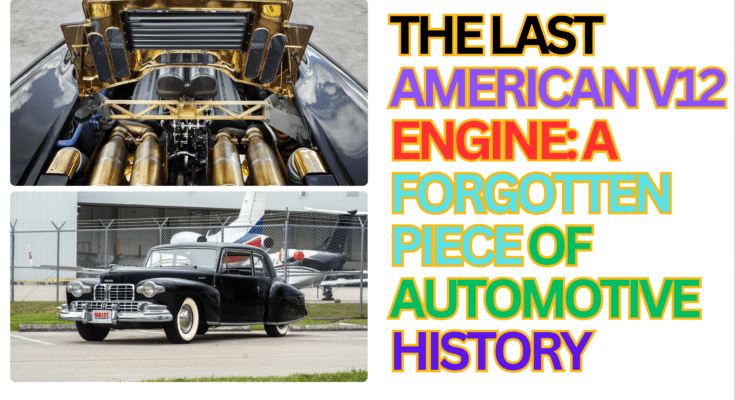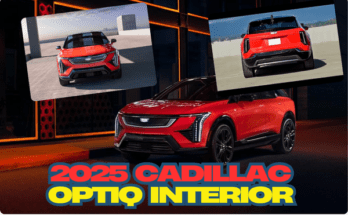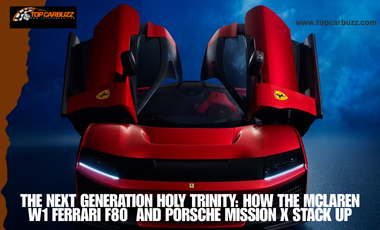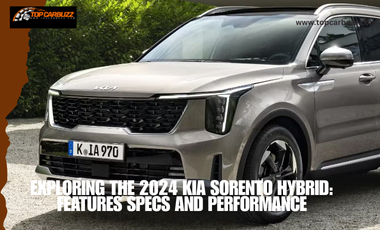When you think of powerful car engines, you might picture roaring V8s or turbocharged six-cylinders. But did you know America once built V12 engines—and the last one rolled off the assembly line over 75 years ago?
That’s right. While European luxury cars like Ferraris and Lamborghinis kept the V12 alive, the U.S. abandoned these massive powerhouses decades ago. Why did American automakers walk away from the V12? What cars used them? And could they ever make a comeback?
In this article, we’ll dive into the rise and fall of the American V12, explore the legendary cars that used them, and uncover why they disappeared from U.S. roads.
What Was the American V12 Engine?
Before we get into its history, let’s break down what made the V12 special.
- V12 Basics: A V12 has 12 cylinders arranged in a “V” shape. More cylinders mean smoother power and high performance.
- Power & Prestige: These engines were big, heavy, and expensive—perfect for luxury cars and high-end vehicles.
- Fuel Thirsty: They guzzled gas, which became a problem later.
Unlike today’s turbocharged engines, V12s relied on raw size and displacement to make power.
The Golden Age of American V12 Engines
1930s-1940s: Peak of the V12
The last true American V12 engines were built in the 1930s and 1940s, before fading away after World War II.
Key American Cars with V12 Engines
- Lincoln-Zephyr (1936-1948)
- Lincoln’s luxury sedan used a 4.8L V12, making 110 horsepower (strong for its time).
- Smooth and quiet, it was a favorite among wealthy buyers.
- Packard Twin Six (1916-1923, 1932-1939)
- One of the first successful V12 cars in America.
- The 1932 Packard Twin Six had a 7.3L V12, producing 160 hp—a beast in its day.
- Cadillac Series 370A (1930-1937)
- Cadillac experimented with a 7.4L V12, but it was too expensive and sold poorly.
Why Were V12s Popular Back Then?
- Status Symbol: Only the richest could afford them.
- Smooth Ride: More cylinders meant less vibration.
- Power Before Turbocharging: Big engines were the only way to make serious horsepower.
Why Did the American V12 Disappear?
By the late 1940s, the V12 was nearly extinct in the U.S. Here’s why:
High Cost & Low Sales
- V12 engines were expensive to build and maintain.
- After the Great Depression and WWII, buyers wanted cheaper, practical cars.
The Rise of the V8
- Chevy, Ford, and Chrysler perfected the V8 engine—almost as powerful but lighter and cheaper.
- By the 1950s, muscle cars proved you didn’t need 12 cylinders to go fast.
Fuel Efficiency Became a Concern
- V12s drank gas like crazy.
- When oil prices rose in the 1970s, big engines became even less popular.
Foreign Competition
- European brands (like Ferrari & Jaguar) kept making V12s for supercars, but Americans shifted to V8s for trucks and muscle cars.
The Last American V12: When Did It End?
The final American-made V12 engine for passenger cars was in the 1948 Lincoln-Zephyr. After that:
- Lincoln switched to V8s in the 1950s.
- No major U.S. automaker has built a production V12 since.
Did Any American Companies Try to Bring It Back?
- Ford GT (2005-2006, 2017-Present) – Used a V8 (not a V12).
- Dodge Viper – Stuck with a V10, not a V12.
- Cadillac – Considered a V12 in the 2000s but never made one.
Even high-performance brands like Corvette and Mustang never went beyond 8 cylinders in mass-produced models.
Could the V12 Ever Return to America?
With today’s focus on electric cars and fuel efficiency, a comeback seems unlikely—but not impossible.
Arguments FOR a New American V12
- Supercar Appeal: Brands like Tesla, Lucid, and Rivian focus on EVs, but a gas-powered V12 hypercar could be a halo model.
- Nostalgia & Luxury: Rolls-Royce still uses V12s—could Cadillac or Lincoln try it?
Arguments AGAINST It
- Strict Emissions Laws: V12s pollute more than smaller engines.
- Electric Future: Most automakers are phasing out gas engines entirely.
- Cost: Developing a new V12 would be extremely expensive for limited sales.
The Verdict?
Unless a boutique carmaker (like Hennessey or SSC) builds one, the American V12 is probably gone for good.
Final Thoughts: A Lost Legend
The American V12 was a symbol of luxury and power in the early 20th century. But as times changed, so did engines—smaller, cheaper, and more efficient won out.
While we may never see a new U.S.-made V12, its legacy lives on in classic cars and automotive history. For now, the last true American V12 remains a relic of a bygone era.
Key Takeaways
✔ The last American V12 was in the 1948 Lincoln-Zephyr.
✔ V12s faded due to high costs, V8 competition, and fuel concerns.
✔ No major U.S. automaker has built a production V12 since WWII.
✔ A comeback is unlikely but not impossible—if a luxury or hypercar brand takes the risk.
Do you think an American V12 could ever return? Or is the era of 12-cylinder engines over? Let us know in the comments!
Keywords for SEO: American V12 engine, last U.S. V12, Lincoln-Zephyr V12, Packard Twin Six, classic car engines, why V12 died, will V12 return, American automotive history.



